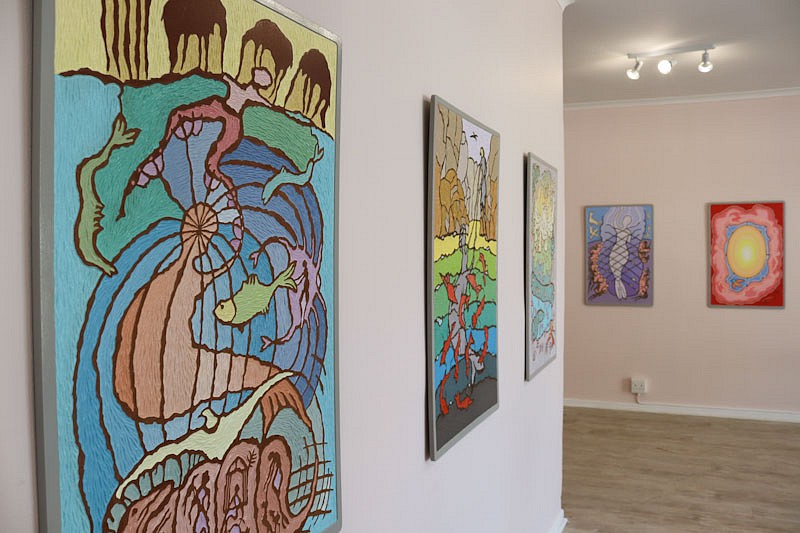PRESS RELEASE

GUY THESEN - WATERMEIDE
Sep 17 – Nov 13, 2022
Watermeide ( mermaids )
Called Sirens by the ancient Greeks and Undines, by Paracelsus, who believed they were associated with the element Water and were, ‘...invisible, spiritual counterparts to visible nature...many resembling human beings in shape, and inhabiting worlds of their own, unknown to man because his und eve loped senses were incapable of functioning beyond the limitations of the grosser elements .
'Believed by some to be 'elementals', with mermaids forming a small part of a vast Deva kingdom of 'nature spirits', 'celestial beings', or 'beings of light'.
In Africa, they go by various names including, 'mami wata ', mamlambo ', nommos ', 'mamba muntu ', chikwambo ', all roughly translated as 'mother water’, ‘lady of the water’ or ‘water spirit’.
Along the chain of southern mountains and in the dry Karoo of South Africa, they are known as ‘kaaiman ’, waterbas ’, watergees ’, waterslang ’, or watermeide. Numerous Bushman rock paintings in the little Karoo show therianthropic figures with fish like tails, human bodies, arms, and heads. The much researched paintings at the Ezeljachtspoort site and surrounds, have created debate as to whether the images do indeed show humans with fish or rather bird tails.
Water, including the sea, rivers, and lakes, etc. has often been interpreted not only as life giving but symbolically also as a transitional or liminal space between this world and another, a borderland of ambiguity, a kind of state of moving from physical reality into a deeper subconscious one. An d the female form with its mysterious fertile energy has mostly been shown to best represent this fluid space of in betweenness.
I interviewed two women, one in Suurbrak and the other in Zoar , who told me their personal accounts in their mother tongue, of how they had each seen a watermeid ’. Listening to them tell their stories, I felt they were telling me truthfully about an event that had clearly left a very d eep emotional impression.
The word 'seen' needs first to be better clarified. One can see a mutually recognized object as solid and being in 3D space or one can see with the 'inner eye', as in a dream, during a hallucination, with clairsentience or clairvoyantly, meaning to see beyond the range of ordinary perception o r s eeing an object not present to the senses or agreed by consensus reality.
This body of work is my interpretation and wonder at this phenomenon existing on the extreme edges of our current vision.
Guy Thesen
Knysna
2022
